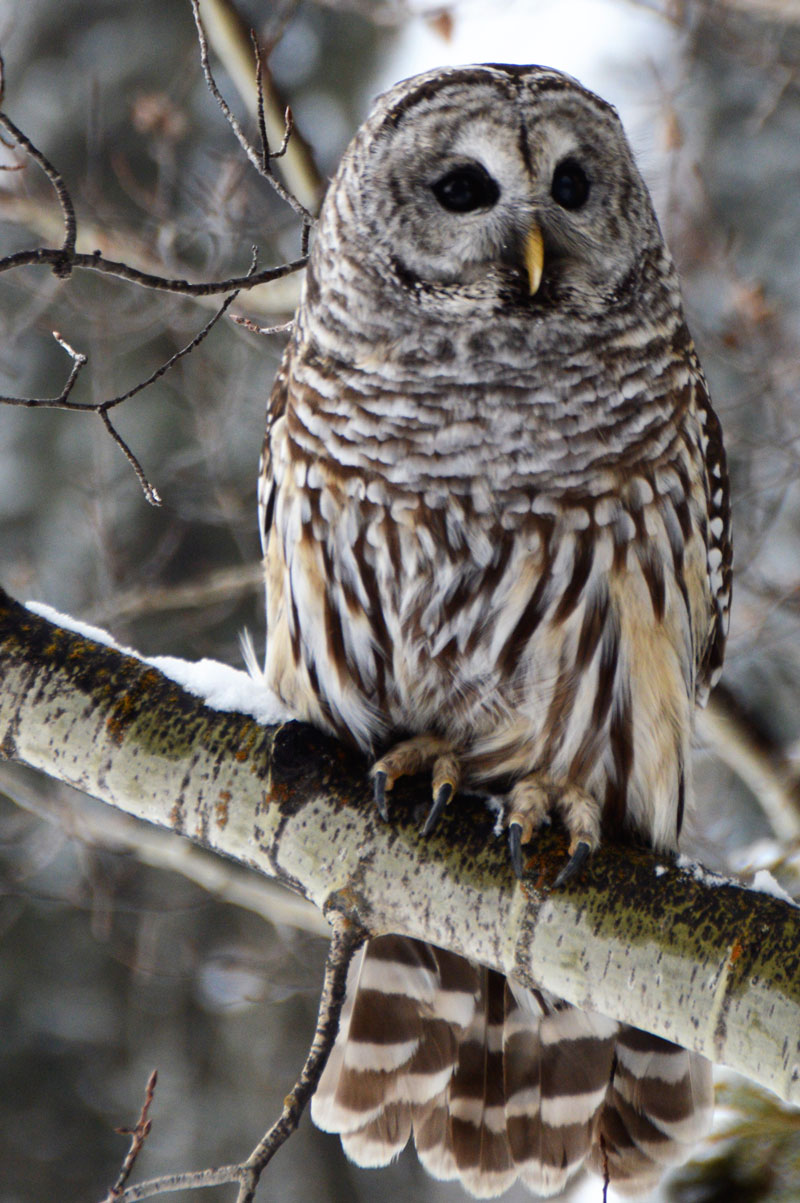
Graduate student Julia Shonfield's research will aid in the detection of barred owls like this one. Credit: Julia Shonfield
A graduate student has developed an automated system for detecting owl calls, eliminating the need for researchers to spend nights in the field and making field research safer.
Julia Shonfield's new method combines audio recorders with a software program that can detect and count owl calls and is equally accurate and far more efficient than other, more traditional methods.
"One of the most common ways that we collect data on owls is through acoustic surveys," explained Shonfield, who is supervised by Erin Bayne, a professor in the University of Alberta's Department of Biological Sciences. "Studying owls is important because they are components of their ecosystems, and are susceptible to changes in the environment due to their position at the end of the food chain."
Shonfield came up with the idea while searching for ways to improve the efficiency of her own work studying the effects of industrial noise on owls in Northeastern Alberta.
The traditional method of collecting this data is to do fieldwork at night, which presents many safety concerns for researchers. More recently, researchers elected to place recorders in the field during the day and program them to record throughout the night, and then play back the audio files and identify any owl calls on the recordings, which is extremely time-consuming.
Increasing efficiency
In an effort to improve the efficiency and accuracy of the fieldwork, Shonfield developed the automated system, using software to process recordings to identify and count owl calls with minimal additional work required. In her analysis of the tool, she found the automated system is just as reliable as traditional data collection methods while being much more efficient.
"Thus far, the new system can detect barred owls, boreal owls, and great horned owls," said Shonfield. "Automating this part of my research leaves room for me to gather more data and dig deeper into the analysis."
The paper, "Utility of automated species recognition for acoustic monitoring of owls," was recently published in the Journal of Raptor Research.